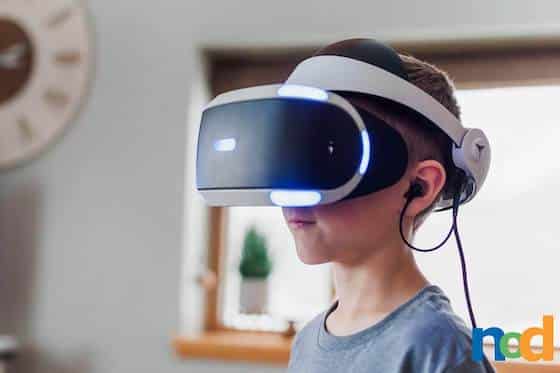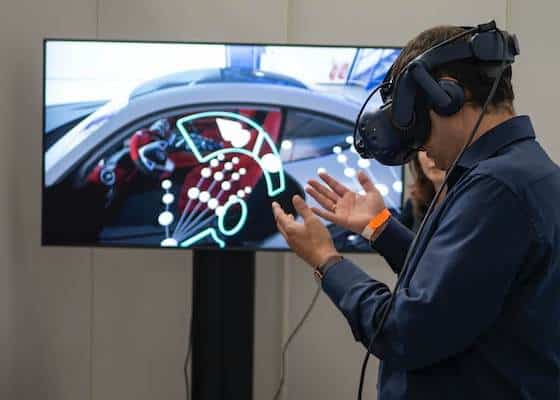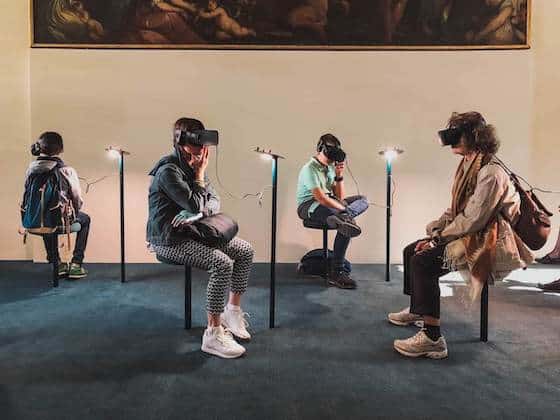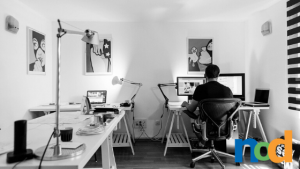The Future Of Virtual Reality Art & Design
by Taylor Slattery | July 25, 2023

A Brief History of Virtual Reality (VR)
While the first forays into VR technology date back to the 60s, it wasn’t until the 90s when video game companies such as Sega and Nintendo would introduce the public to the concept of virtual reality through wearable headsets, adopting the ubiquitous form factor we’re all familiar with today.
While the technology utilized in these early examples was a far cry from the VR headsets available today, the imagination that inspired their creation remained a driving force behind the development of the field as a whole.
It would be another couple of decades before we’d see any realization of the full immersion experience we’d been dreaming of since the early days of VR. In 2012, the first glimmer of hope came in the form of a massively-successful crowd-funding campaign for the Oculus Rift DK1, a VR headset that utilized a 7-inch screen capable of providing users with a realistic field of view, unlike anything the world had ever seen.
It wasn’t long before the buzz around Oculus (now Meta Quest) and VR caught the attention of major players in the tech space and Oculus would go on to be acquired by Facebook a couple of years later. Around the same time, a number of new VR projects would be announced by the likes of Sony, Google, and HTC, and by 2016, VR was everywhere.

Metaverse – “Hello, Virtual World”
The ways VR is used today aren’t very different from the ways it was used when the technology was first made commercially available for users to explore and enjoy at home, with the primary use being recreational. As a result, most of the development in the space has been focused on gaming.
However, things changed in 2021, when Facebook announced its rebranding as Meta. The social media site, originally developed for connecting Harvard students, would be turning its sights toward VR, and its digital world dubbed the metaverse.
Staying true to their roots, the stated purpose of the metaverse was to bring people together, which, given the quarantine period during COVID-19, seemed like a logical next step in the progression of VR. We’d all been thrust into this new norm of only seeing our coworkers via webcams in Zoom meetings and Meta’s new vision offered a remedy to the lack of personal connection many were struggling to adjust to.

One Big Player, That’s Ready
Beyond just being able to interact with our coworkers’ avatars in a digital meeting space or browse our collection of digital artworks in our digital homes, what exactly does the metaverse have to offer? Now, almost 2 years have passed since the Meta rebranding, and it doesn’t seem like we’re any closer to the level of immersion depicted in movies like Ready Player One.
Despite hemorrhaging money, Meta has doubled down on its vision of a future where users turn to VR not only for entertainment, but for work and daily personal tasks as well.
Meta’s company’s success will be a large indicator of the future adoption of VR as a whole, having already established and purchased so much of the competition in the VR space. Many remain highly speculative of the technology, and the price of entry still remains a major barrier to its widespread adoption.
There’s new optimism with both Google and Apple either having already announced or currently working on similar AR (augmented reality) and VR devices. Meta remains the single largest player—and with so much riding on one company, others will have a tough time making a case for VR’s utility outside of gaming and entertainment.
Art and Design in Virtual Reality
One of the more exciting aspects about the future of VR is in how a variety of programs are already making it the next digital canvas for artists and designers.
A massively exciting program for designers is Gravity Sketch. This VR design tool allows for you to break out of the bounds of traditional 2-D design mediums such as desktops, tablets and notebooks.
Instead, Gravity Sketch allows for 3-D modeling in VR by drawing and designing in a virtual environment free from the confines of gravity or working with hard and heavy materials. It also allows for collaboration with other coworkers and other designers to help make product mark-ups, rough drafts & 3-D models as realistic and interactive as possible.
Another fun software that allows for more traditional artists to easily break the laws of physics is Painting VR. This simple yet intuitive studio for VR art allows you to leave paint brushes floating in mid-air until you need them again. To quote their product directly, “Even if you think you’re not a creative person, Painting VR might prove you wrong.”
Every wanted to tag a train car with some sick graffiti without having to worry about going to jail for the night? Well, that’s where Kingspray Graffiti comes in. Kingspray is a VR graffiti experience where you’re able to channel your inner street artist. You can create compelling graffiti free from the repercussions of fickle spray-cans, harmful odors, and most importantly, the Law.

Taylor is the Managing Editor of Notes on Design. Taylor is a graphic designer, illustrator, and Design Lead at Weirdsleep.









